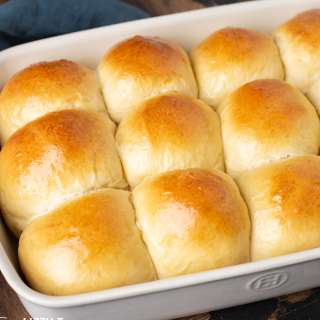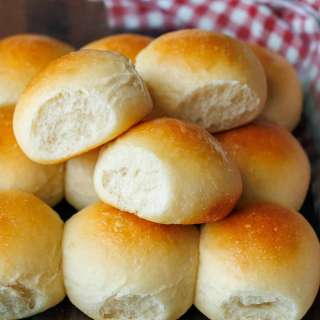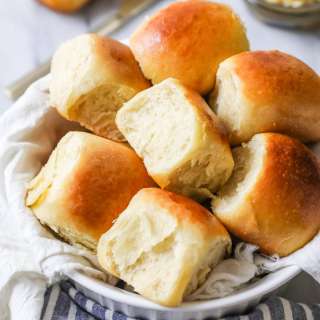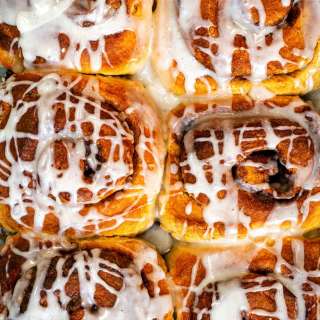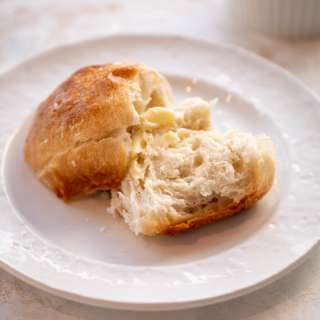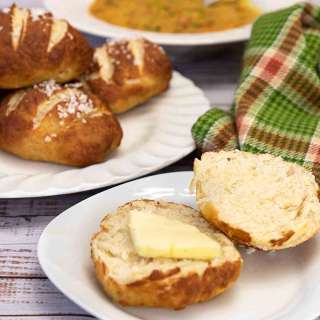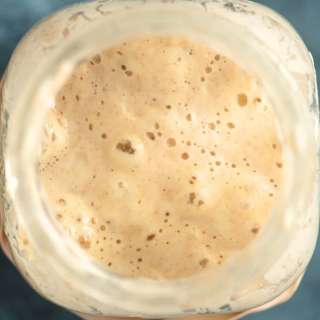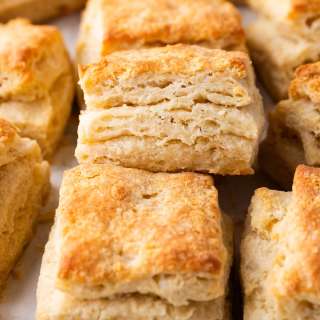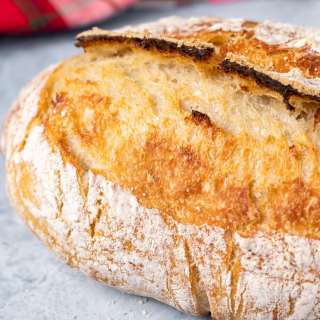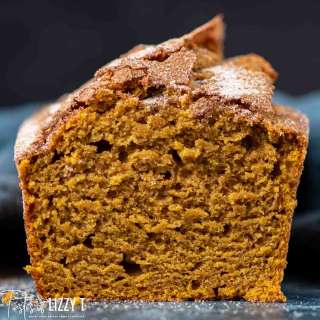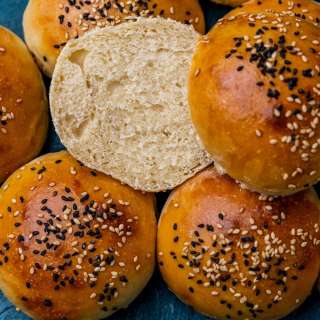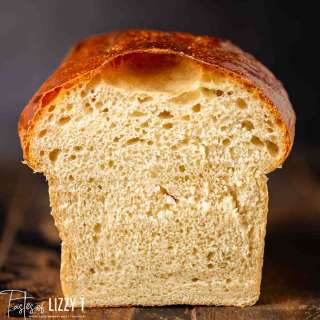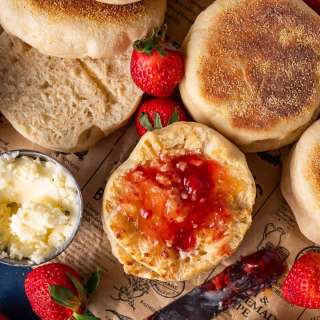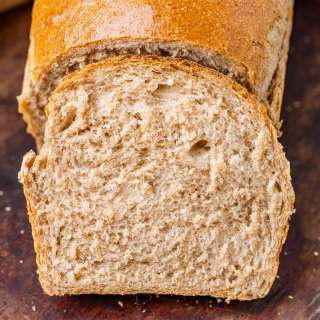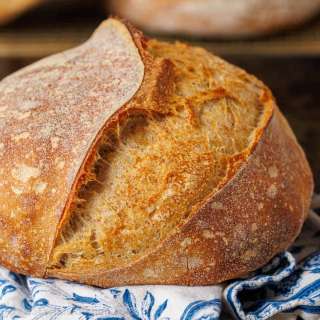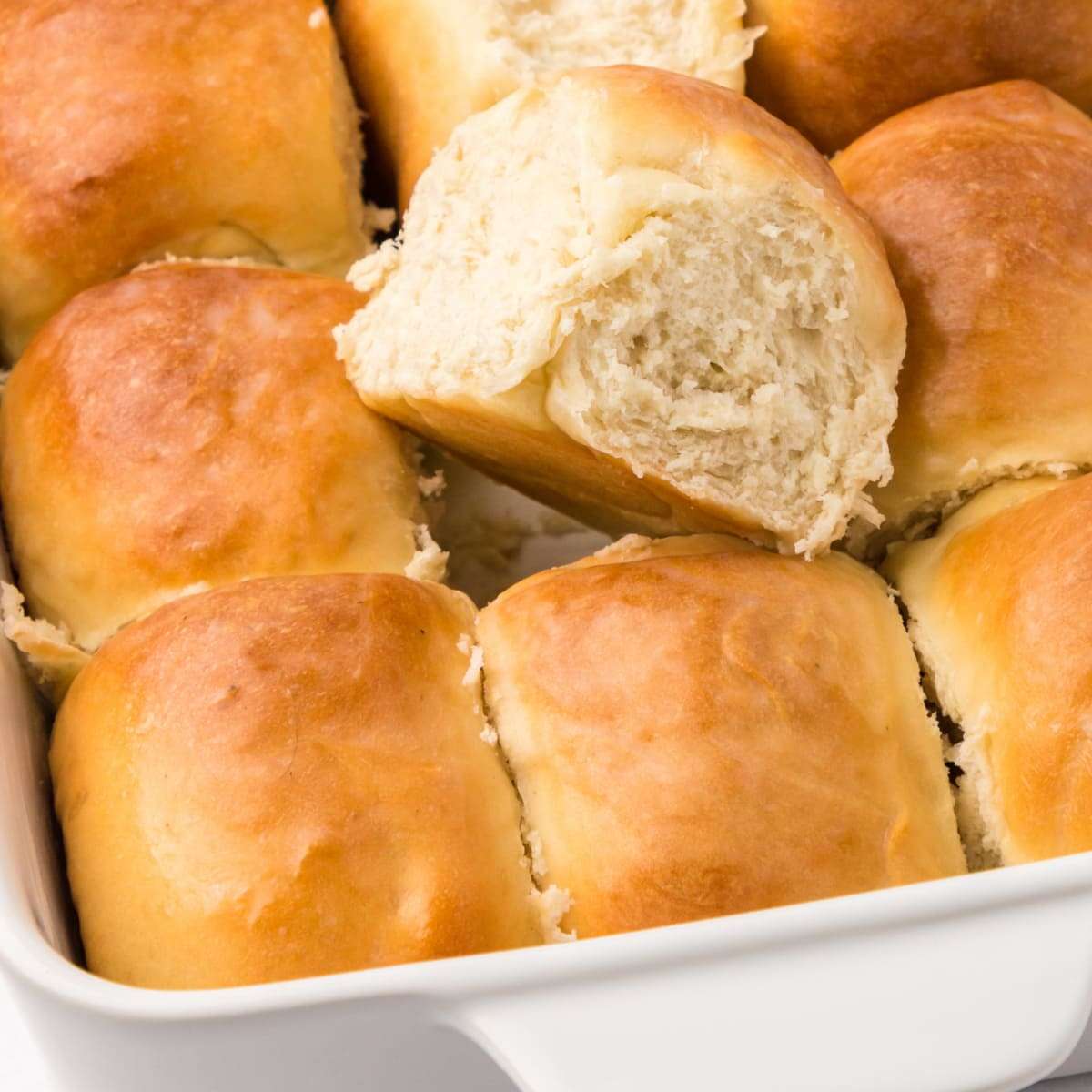
Sourdough Rolls
User Reviews
5.0
3 reviews
Excellent

Sourdough Rolls
Report
This recipe for Sourdough Rolls results in the softest and fluffiest dinner rolls you will ever have. They can be used in many different ways. Your family is going to love them!
Share:
Ingredients
- 1/2 cup sourdough starter fed, if unfed, see notes
- 1 cup warm water
- 1/4 cup sugar
- 1 teaspoon dry active yeast
- 1/4 cup unsalted butter melted
- 1 teaspoon salt
- 3-3 1/2 cups all-purpose flour
- 1 tablespoon gluten
Instructions
- The night before, feed your sourdough starter.
- Measure out ½ cup of sourdough starter and put it to the bowl of your stand mixer. Add in the cup of warm water (about 100 degrees F, 38 degrees C) and stir to combine. **I like to use a whisk for this process instead of using the dough hook because it saves time.
- Add the sugar and tsp of dry active yeast to the sourdough mixture. Using your whisk, stir to fully combine. **If you want to allow your dough to rise overnight reduce the yeast to ½ tsp. **If your sourdough mixture is unfed, increase the yeast to 2 tsp-2 ¼ tsp.
- Allow the mixture to sit for about 5 minutes.
- Meanwhile, melt the butter and allow it to cool slightly so it’s not too hot before adding it to the yeast mixture.
- Add in the melted butter and salt. Using your whisk, stir to combine.
- Add 1 cup of all-purpose flour and the gluten. Using your whisk, stir to combine. The mixture will be slightly lumpy and very wet. That’s okay.
- Attach the dough hook to your stand mixer and add ½ cup at a time of the all-purpose flour. Mix and allow the flour to be fully worked in before adding in more. Repeat this process until the dough releases from the sides of the bowl. The dough will still be slightly sticky and that’s okay just as long as the dough releases from the sides of the bowl without leaving residue on the sides of the bowl. About 3 cups. **The amount of flour will vary depending on how the flour has been measured. It’s best to either measure your flour using a scale or spoon the flour into the measuring cup and level out the flour.
- Once you’ve incorporated all of the flour, it’s time to knead the dough. Set the electric mixer to medium-high speed and allow the mixer to run for about 5 minutes. The dough will become soft and slightly shiny when done. **I’ve included images of the different stages of the dough so you’ll know when the dough is ready.
- Turn the dough to a lightly floured surface and grease the inside of your mixing bowl. Place the dough back in the greased bowl and allow the dough to rise for 3 hours or until the dough has doubled in size.
- Once it’s doubled in size, turn the dough out onto a lightly floured surface. Divide the dough into 8 equal portions. Roll the dough into balls and place in a parchment lined and greased 9x16 baking dish.
- Cover and allow to rise for about 30 minutes. About 10 minutes before they’re done rising for the second time, preheat the oven to 375 degrees F (191 degrees C).
- Bake at 375 degrees F (191 degrees C) for 25 minutes or until the tops are golden brown. Allow to cool for 10 minutes before serving.
- Once done, brush the top of the rolls with some melted butter and serve.
Notes
- If the starter wasn’t fed the night before, or if they’re unsure if their sourdough is active, increase the amount of yeast to 2-2 ¼ tsp (or 1 packet).
- If the starter wasn’t fed the night before, or if they’re unsure if their sourdough is active, increase the amount of yeast to 2-2 ¼ tsp (or 1 packet).
- You should see bubbles in your sourdough starter.
- You should see bubbles in your sourdough starter.
- You can substitute the dry active yeast for instant yeast 1:1.
- You can substitute the dry active yeast for instant yeast 1:1.
- If you’d like to allow your dough to rise for 24 hours you can omit the yeast completely just make sure that your sourdough is active and fed.
- If you’d like to allow your dough to rise for 24 hours you can omit the yeast completely just make sure that your sourdough is active and fed.
- The gluten is used to keep the dough soft and pillowy.
- The gluten is used to keep the dough soft and pillowy.
- I use unsalted butter, but if you’re using salted butter or margarine reduce the salt by half.
- I use unsalted butter, but if you’re using salted butter or margarine reduce the salt by half.
Nutrition Information
Show Details
Calories
196kcal
(10%)
Carbohydrates
35g
(12%)
Protein
4g
(8%)
Fat
4g
(6%)
Saturated Fat
2g
(10%)
Polyunsaturated Fat
0.3g
Monounsaturated Fat
1g
Trans Fat
0.2g
Cholesterol
10mg
(3%)
Sodium
204mg
(9%)
Potassium
43mg
(1%)
Fiber
1g
(4%)
Sugar
4g
(8%)
Vitamin A
118IU
(2%)
Vitamin C
0.001mg
(0%)
Calcium
7mg
(1%)
Iron
2mg
(11%)
Nutrition Facts
Serving: 12Serving
Amount Per Serving
Calories 196 kcal
% Daily Value*
| Calories | 196kcal | 10% |
| Carbohydrates | 35g | 12% |
| Protein | 4g | 8% |
| Fat | 4g | 6% |
| Saturated Fat | 2g | 10% |
| Polyunsaturated Fat | 0.3g | 2% |
| Monounsaturated Fat | 1g | 5% |
| Trans Fat | 0.2g | 10% |
| Cholesterol | 10mg | 3% |
| Sodium | 204mg | 9% |
| Potassium | 43mg | 1% |
| Fiber | 1g | 4% |
| Sugar | 4g | 8% |
| Vitamin A | 118IU | 2% |
| Vitamin C | 0.001mg | 0% |
| Calcium | 7mg | 1% |
| Iron | 2mg | 11% |
* Percent Daily Values are based on a 2,000 calorie diet.
Genuine Reviews
User Reviews
Overall Rating
5.0
3 reviews
Excellent
Other Recipes
